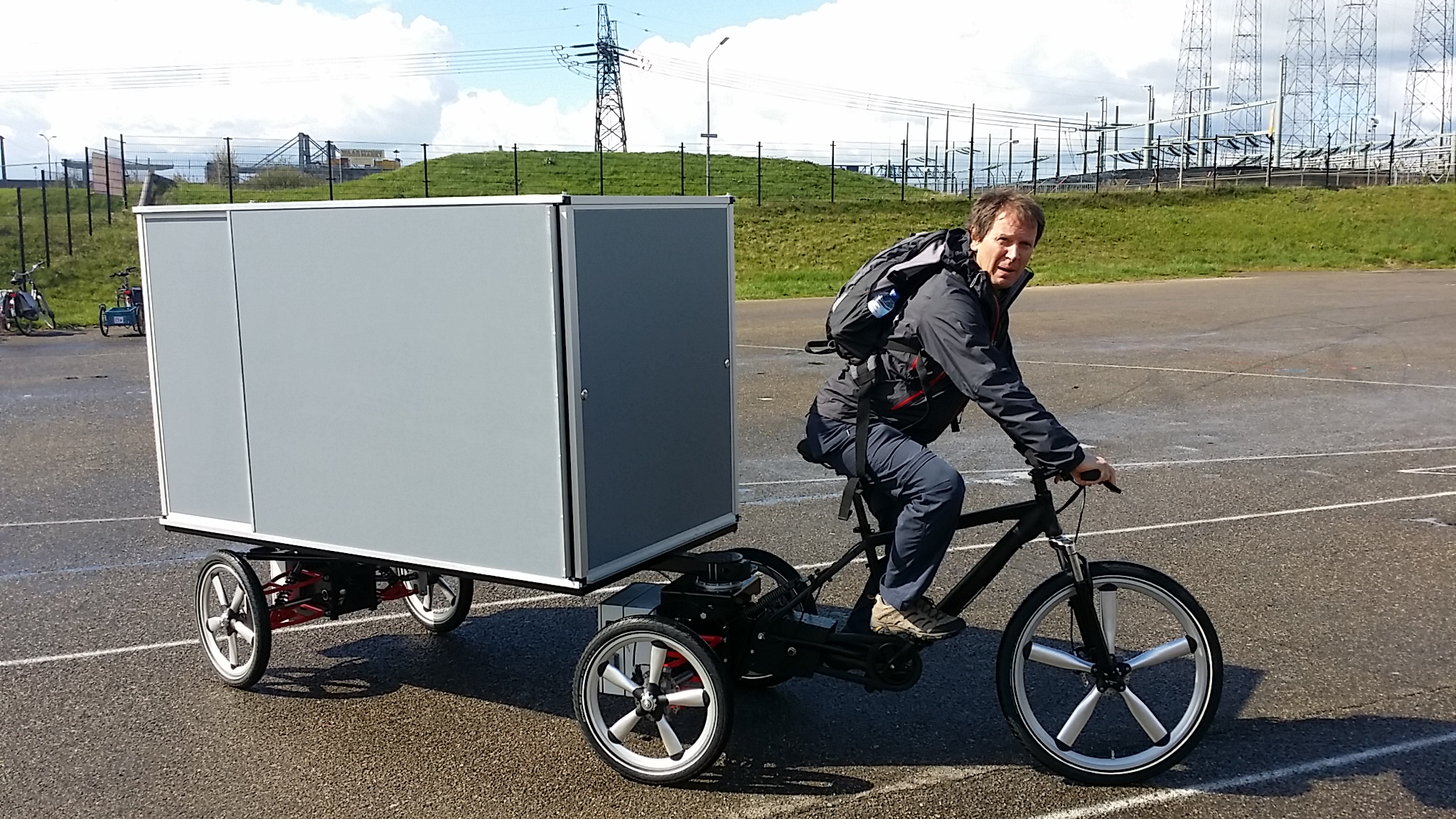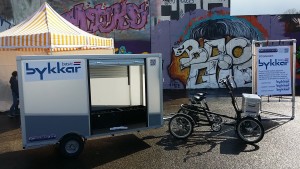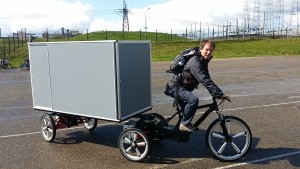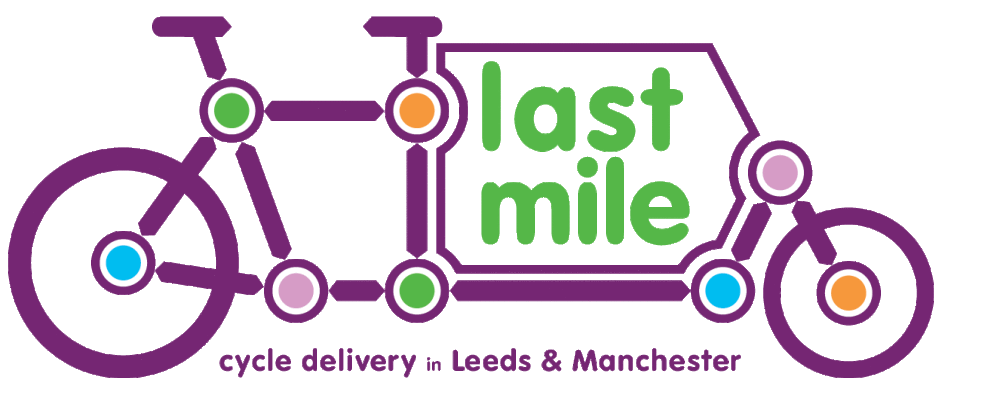
It has to be about more than emissions
I recently attended the International Cargo Bike festival in Nijmegen in the Netherlands. It is striking how much the technology has moved on in the last 12 months. There was a whole host of cycle powered and vehicles present and I had the opportunity to ride several new vehicles which are either in prototype or pre-production phase.

In particular I was keen to try several of the larger trikes and quads that were on show. The primary constraint with our delivery work is volume. The bikes we operate are rarely (if ever) unable to cope with the weight of the loads we are carrying, but we are sometimes defeated by volume. Our depot is very close to Leeds city centre and so it is no problem for us to make 2 or 3 return trips in the space of a few hours but if we want to extend our delivery range then we need to find a way to minimise the frequency of returning to the depot to reload and one obvious way to do this is to pack more parcels on one bike. Therefore I focussed on trikes, quads and trailer setups which would allow us to carry loads approaching that of a small van, and I was impressed by the range of solutions that have appeared in the space of a year or two.
When big isn’t beautiful
However I have also begun to think about some of the drawbacks…

One of the vehicles I rode this weekend was a quinticycle (see here for one critique) which was not even pedal powered. Its pedals were attached to a small generator which apparently would trickle charge the batteries extending the (quite impressive 80km) range of the setup by about 20% but they provided no direct power to the drivetrain. Apart from being an incredibly inefficient use of human power (maybe only 40% of the input energy reaching the wheels) and effectively capping the power output at the 250W of the motor which the regulations allow what they have created is a rather slow and underpowered van unable to benefit from the input of the rider. This highlights a growing realisation that as pedal powered vehicles get larger what we are essentially creating are smaller slower vans.
At the moment the pressures from local (and city) authorities are in the form of emissions limits, but every indications is that they may begin to look at road space also. If our ped-elec bikes are approaching the size of small vans then what is the difference between these and any one of the increasing number of electric or hybrid vehicles coming onto the market? They may be cheaper, but they are also slower and have a smaller capacity. As they increase in width beyond a set of handlebars their ability to filter through traffic will be diminished to the point at which they offer no appreciable advantage. In fact their lower speed may prove detrimental to overall traffic flows. We need to provide a solution not be part of the problem!!
Overtaken by Technology…
If we allow our industry to develop solely through the use of bike shaped electric vehicles we run the risk of one day being overtaken by technology. Any courier can switch to a zero emission fleet almost overnight if they have the will to do so and if cyclelogistics as an industry has already committed itself to larger and larger vehicles which take up just as much room on the roads as conventional vehicles then we will find ourselves rapidly overtaken by the commercial courier sector who have suddenly saved themselves a fortune in fuel costs but have otherwise hardly changed their modus operandi.
One of the big benefits of cycles is the sort of environment they create, blurring the lines between pedestrian and wheeled transport when it suits while also allowing a very large number of people (and large amount of freight) to be carried. Bikes can be faster round our cities than vans and make more stops per hour, but they can do this because they exist in the liminal space of both vehicle and pedestrian. We can flow through busy traffic when we need to cover distance, but can also seamlessly become pedestrians when the need arises without undue thought to parking or inconvenience to others (either on the roads or otherwise). Of course anyone who has ridden a two-wheeled cargo bike has wished for greater capacity, and I will be the first to admit that I am looking for a larger vehicle to add to our fleet, but this needs to be as part of a mixed fleet which is brought in to handle particularly large deliveries. Otherwise we may find ourselves looking more and more like the competition.
Future Proofing
I recently had a very interesting meeting with a representative of one of the biggest international couriers (or consolidators as he liked to call them). He recognised that within the next 5 years they would not be able to deliver in city centres the way they do now, so his interest in cyclelogistics was as a way of future proofing their business. If every private car was a Prius (and every delivery vehicle run off hydrogen fuel cells) this won’t appreciably change the environment of our cities, unless moves are also made to reduce the number of these vehicles on the road. He expects pressures to reduce traffic flows during the day will drive deliveries out of usual business hours with the requirement for ‘quiet’ vehicles in residential areas.
Cyclelogistics has plenty to offer to this vision, and can contribute to our cities becoming better more human places to live. Doing that, rather than reproducing the current model with less pollution, will more effectively secure our role in 21st century logistics.
